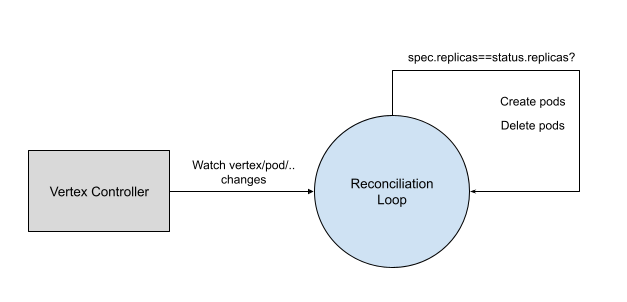Autoscaling¶
Overview¶
Numaflow developed its own dedicated autoscaling mechanism because the native Kubernetes Horizontal Pod Autoscaler (HPA) is fundamentally not suitable for event-driven stream processing.
The need for a specialized solution stems from three core limitations of HPA:
-
Metric Mismatch: HPA scales based on generic resource consumption like CPU and memory utilization. In a streaming pipeline, the true measure of load is the number of unprocessed messages (queue depth). A low CPU reading might just mean a pod is waiting for data, and a high CPU reading doesn't tell you whether the next stage can handle the output. We need a scaling mechanism that correctly scales based on the actual backlog of work.
-
Lack of Pipeline Awareness: Unlike HPA, we need a holistic, backpressure-aware solution. It doesn't just look at a single queue depth; it analyzes the status of the entire pipeline. This is crucial for preventing cascading failures by throttling upstream stages when downstream components are overwhelmed, ensuring resilient and efficient data flow.
-
Architectural Independence: To enable fast, accurate, and self-sufficient scaling, the autoscaler should not rely on external infrastructure like Prometheus or the Kubernetes Metrics Server. We need a solution that gathers all necessary data internally, providing immediate access to metrics and simplifying operations.
By addressing these issues, Numaflow's autoscaler provides a scaling strategy that is precise, cost-efficient, and natively designed for the dynamics of real-time event streams.
Scale Subresource¶
Scale Subresource
is enabled in Vertex
Custom Resource,
which makes it possible to scale vertex pods. To be specifically, it is enabled
by adding following comments to Vertex struct model, and then corresponding
CRD definition is automatically generated.
// +kubebuilder:subresource:scale:specpath=.spec.replicas,statuspath=.status.replicas,selectorpath=.status.selector
Pods management is done by vertex controller.

With scale subresource implemented, vertex object can be scaled by either
horizontal or vertical pod autoscaling.
Similar capability is implemented for MonoVertex.
Numaflow Autoscaling¶
The out of box Numaflow autoscaling is done by a scaling component running in
the controller manager, you can find the source code
here.
The autoscaling strategy is implemented according to different type of vertices.
Source Vertices¶
For source vertices, we define a target processing time (in seconds) to finish processing the pending messages based on the processing rate (tps) of the vertex.
targetProcessingRate = pendingMessages / targetProcessingSeconds
singlePodProcessingRate = currentProcessingRate / currentReplicas
desiredReplicas = targetProcessingRate / singlePodProcessingRate
For example, if targetProcessingSeconds is 3, current replica number is 2,
current tps is 10000/second, and the pending messages is 60000, so we
calculate the desired replica number as following:
desiredReplicas = 60000 / (3 * (10000 / 2)) = 4
Numaflow autoscaling does not work for those source vertices that can not calculate pending messages.
UDF and Sink Vertices¶
Pending messages of a UDF or Sink vertex do not always represent the real number
because of the restrained writing caused by back pressure, so we use different
strategies. When the number of pending messages does not hit the
targetAvailableBufferLength, same model as source vertex autoscaling is used,
otherwise we use a different model described below to achieve autoscaling for
them.
For each of the vertices, we calculate the available buffer length, and consider it is contributed by all the replicas, so that we can get each replica's contribution.
availableBufferLength = totalBufferLength * bufferLimit(%) - pendingMessages
singleReplicaContribution = availableBufferLength / currentReplicas
We define a target available buffer length, and then calculate how many replicas are needed to achieve the target.
desiredReplicas = targetAvailableBufferLength / singleReplicaContribution
Back Pressure Impact¶
Back pressure is considered during autoscaling (which is only available for Source and UDF vertices).
We measure the back pressure by defining a threshold of the buffer usage. For
example, the total buffer length is 50000, buffer limit is 80%, and the back
pressure threshold is 90%, if in the past period of time, the average pending
messages is more than 36000 (50000 * 80% * 90%), we consider there's back
pressure.
When the calculated desired replicas is greater than current replicas:
- For vertices which have back pressure from the directly connected vertices, instead of increasing the replica number, we decrease it by 1;
- For vertices which have back pressure in any of its downstream vertices, the replica number remains unchanged.
Autoscaling Tuning¶
Numaflow autoscaling can be tuned by updating some parameters, find the details at the doc.